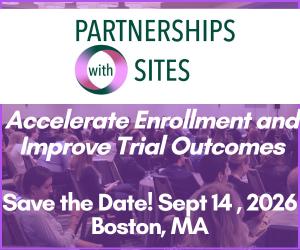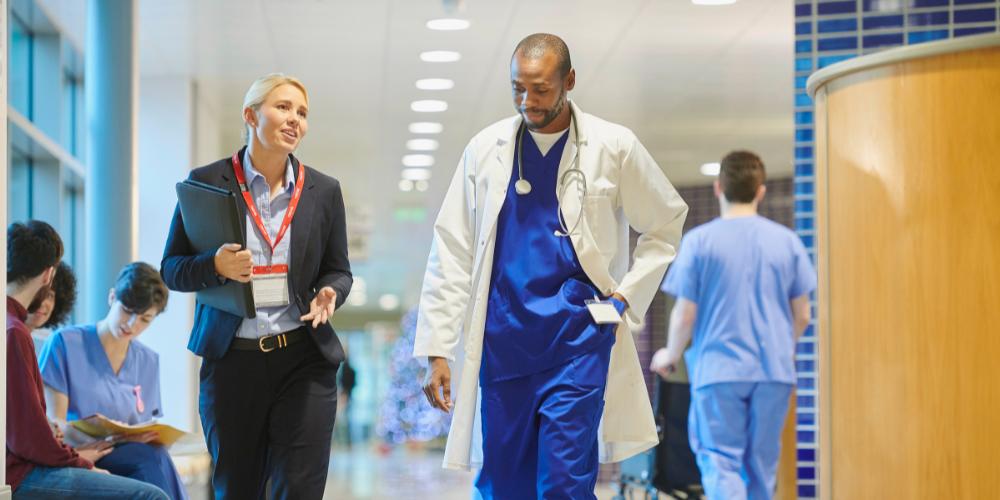
What advice do you have for hospitals located in under-resourced populations on how to get started in clinical research?
The key to any successful clinical research program, and especially early phase oncology clinical research, is to establish a specifically dedicated team of investigators and research staff, nurses, data coordinators etc.
Successfully, enrolling patients from communities that have been economically and socially marginalized requires the additional need to address underlying social risk factors, such as transportation needs, childcare, getting time off of work, etc. If a patient does not have someone available to pick up their children after school or has a job without provisions for time off for health needs, it is hard to spend 12 hours at a cancer center for a clinical trial requiring pharmacokinetic labs.
What is Montefiore’s commitment to bringing clinical research to its patients?
Montefiore Einstein Comprehensive Cancer Center serves the Bronx, serving a population of 1.5 million with 80% or more being from minority populations that are typically underrepresented in clinical trials.
As one of the first NCI-designated cancer centers and being committed to serving our patients and advancing clinical and basic cancer research, we needed to build up the clinical infrastructure, particularly in the early phase drug development, to take advantage of that uniqueness. A key aspect of this was developing a stronger focus on early therapeutics.
"The key to any successful clinical research program, and especially early phase oncology clinical research, is to establish a specifically dedicated team"
Why is it so important to bring early phase research to under-resourced populations?
Most early phase research is being conducted in populations that are already well-served; Montefiore recognized that patients in under-resourced groups weren’t getting early access to these novel compounds. We might have to wait five years or more for regulatory approval, or for the drug to get to a later phase trial, before a patient in the Bronx would have access.
Due to improvements in pharmacokinetic and pharmacodynamic modeling, and some flexibility on the regulatory side, higher and earlier effective doses are being administered to patients on phase 1 trials. Now, if you look at data from recent trials, particularly in immuno-oncology, you can see clinical activity, benefiting patients within the first 3-4 cohorts of patients enrolled.
We want to bring early phase programs with the potential to show early benefit, to patient populations that didn’t have access before. For our patients, Montefiore is their local hospital; they’re not traveling to other cancer centers for treatment.
How does Montefiore Einstein organize its clinical research to be most effective at offering trials to patients?
We have an umbrella clinical cancer research office, under which we have 11 disease modality teams: lung cancer, breast cancer, gastrointestinal cancer, hematological malignancies, etc. These programs are tasked with developing and conducting clinical research studies to bring relevant, cutting-edge programs to patients.
I lead the early phase clinical trial program, and can bring new, innovative trials to our patients. Our team interacts with all the disease modality teams so that we have input from them on where they need early phase clinical trials. We see a lot of early phase trials adding a second IO agent to a standard IO drug like pembrolizumab, as well as first-in-human trials of drugs that have just come through IND acceptance.
In addition to that, a priority has been to bring some of our own basic science into the clinic. There are several Phase I programs entering the clinic that are based on science developed at Montefiore Einstein.
"We want to bring early phase programs with the potential to show early benefit, to patient populations that didn’t have access before."
What is the pathway for a patient to get into a clinical trial?
When a patient gets a cancer diagnosis, they are referred to the specific disease modality team, and that’s where it’s identified if they would be appropriate candidates for clinical trials.
We work on algorithms to determine what are the best treatment options, considering the patient’s stage of disease, extent of prior therapy and specific biologic features of the cancer cells, such as gene expression and/or genetic mutations. In this way, everyone agrees on the approach. Beyond that, each disease team decides which studies they want to pursue. My team has a particular interest in cell therapy, including immune cell-engaging therapy for cancer. We have a very strong CAR T program in solid tumors now; we're very excited about bringing that technology to patients. Importantly, each disease modality team is supported by a research team embedded in the Clinical Trial Office which allows for identification, screening and consenting potentially eligible patients for clinical studies.
What are the challenges unique to providing early phase research to patients?
There are challenges for patients in understanding what a Phase I trial is, and why a patient should participate in it. We spend a lot of time on education, talking to patients about their disease and why they were sent to the early phase team.
I tell every patient, “We are the team that comes up with new treatments when other treatments have stopped working.” Education is so crucial because there is a lot of oversight required for early phase trials specifically. Patients may be asked to come in for frequent clinic visits and may spend sometimes up to 12 hours in a day for pharmacokinetic studies, which is tough.
How do you reduce the burden of participation for your patients?
We try to make it as easy as possible, but we recognize that there are a lot of barriers for our patient population. In our budget, for example, we try to include reimbursement for transportation, food, and childcare, because we recognize that these are the challenges preventing people from participating in clinical trials. We need to anticipate and address these barriers.
What are the challenges you’re working on specific to the community you serve?
Often, we see that the patients we serve have comorbidities that may not have been addressed adequately, such as unmanaged/poorly managed diabetes, hypertension, liver disease, etc. which result in reduced organ function over time. Early phase clinical trials are very restrictive in terms of preserved organ function, and we’ve found that many of the patients who come to us don’t qualify because of that. Enrolling patients in early phase trials, and in particular first-in-human studies, where the toxicity profiles are not yet established, is a balance between ensuring safety and tolerability and wanting to include more patients who are in need of effective treatments to control their cancer.
Another struggle not unique to Montefiore Einstein is medical mistrust, which we are trying to overcome through community outreach programs.
"Education is so crucial because there is a lot of oversight required for early phase trials specifically."
How are you addressing those challenges to make sure patients have access to research?
In terms of addressing comorbidities, we are currently looking at our data from the last few years to see what percentage of the patients we see fail to qualify for our phase 1 trials because of their comorbidities and/or reduced organ function. At Montefiore Einstein, we are working to address these social determinants of health, because everything starts with better primary care.
On medical mistrust, we’re using community outreach programs One of these programs is called DISRUPT (Diversity Inclusion in Science Research Underpinning Prevention and Treatment), funded by Stand Up to Cancer, to enable education and outreach through programs and town halls. We’ve worked with Genentech on the Advancing Inclusive Research Alliance, which focuses on patients from under-resourced populations to bring them new research first.
How has the work to advance people’s health and reduce mistrust impacted the number of patients enrolled?
We’ve certainly seen the number of patients enrolled in clinical trials increasing at our cancer center, particularly in early phase trials. We took a big hit during COVID; particularly in the Bronx, 100% of the inpatient beds were filled with COVID patients. During this time cancer research was drastically slowed but has picked back up since then.
I have found that our outreach program to help the community has increased access to these trials and the patients are benefitting. We’re part of the national NCI Community Oncology Research Program: the benchmark of patient participation from minority/under-resourced community sites has been around 60%. Our site is consistently in the 85% range. We serve this population, and we have a mandate to bring cutting-edge research to our patients and beyond.
What do you see as a five-year goal for Montefiore’s early phase research work?
Our goal is to more fully incorporate early phase studies into the standard management of advanced malignancies across the spectrum of both solid and liquid tumors. Although we have seen great progress in the treatment of many advanced cancers, there is still a lot of room for improvement.
Early phase clinical trials are the best way to bring new technologies to patients earlier in the course of their disease. For many cancers, once initial treatments have failed, additional FDA-approved therapies may only provide marginal benefit. Investigational treatments, including in some cases, Phase 1 agents, may be the next best option. If new therapies are not employed early in the course of cancer care, patients may not see the full benefit.








